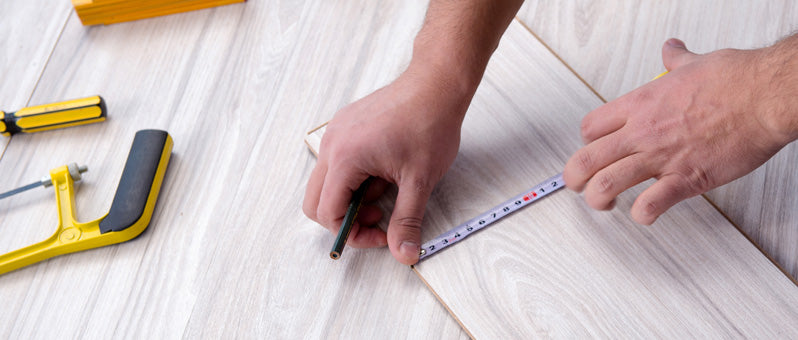What is Laminate Flooring? A Quick Guide.

What Is laminate flooring?
Laminate flooring is a viable, low-cost and increasingly popular option for homeowners who want an attractive surface underfoot. It’s a synthetic product, composed of an amalgam of materials arranged in layers. The levels consist of a bottom tier of melamine resin, a compound that resists moisture and adds strength right at the foundation. On top of this lies high-density fiberboard (HDF) a material that makes up the core of the flooring. The HDF is topped by a decorative layer that uses HD technology to replicate the appearance of stone, marble, tile or hardwood. These layers are compressed and then covered with a transparent, protective coating that resists scratching, stains and other damage. It is truly a product that is greater than the sum of its parts.
Laminate’s History
The technique for resilient floor coverings was first developed in Sweden in 1977 when the Perstorp Company developed and marketed this new product under the brand name Pergo. A glueless version of the product was subsequently launched from Valinge Aluminum (another Swedish company) and sold under the brand names Alloc and Fiboloc. At about the same time the Belgian brand Quick-Step from Unilin also appeared. Both companies today license the product.
Advantages of Laminate Flooring
Often referred to as a “floating floor," this type of covering has many distinct advantages.
- Laminate can be placed on almost any existing, level, interior ground surface.
- Laminate is easy to install. It’s pieces simply click into place with a tongue and groove system that attaches one piece to another in sequence. There’s no need to use glue or nails (Although glue can still be used, it is optional).
- If damage does occur to your laminate floor, individual planks can easily be removed and new ones installed without affecting the rest of the floor.
- Laminate is inexpensive compared to hardwood, marble and sometimes even carpet. Generally speaking, laminate costs about 25% as much as a solid wood floor.
- Laminate is versatile. It can be made to look like stone, marble, wood or even ceramic tile.
- Laminate is easily maintained. There’s no need to polish. Simply dust, vacuum or wipe it down with a recommended cleaning solution (always follow manufacture recommendations).
- Because it’s easy to clean, laminate and other hard surface options are a sound choice for allergy sufferers.
- Laminate is an eco-friendly choice. Its HDF core board is usually composed of wood waste or sustainable pine trees.
- Laminate is highly resistant to stains and impact and does not fade over time.
Environmental Concerns?
There was some controversy early in this decade regarding the use of melamine resin in the manufacture of laminate flooring. This concern focused on materials that had been manufactured outside the US with a higher concentration of formaldehyde than is allowed by US regulations. Although it was a very isolated incident involving one retail chain, it did have an unfortunate impact of the reputation of laminate. The industry has since responded by removing these products from the marketplace. Strict import laws and regulation have worked to restore laminate as a viable, durable product that many homeowners continue to add to their homes and should be considered 100% safe when purchased from a reputable dealer.
